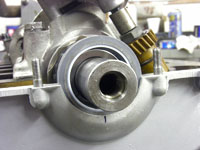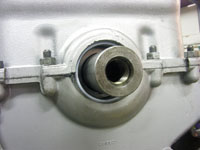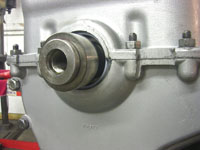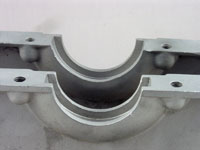Jaguar XK Front Crank Seals
By Dick Maury
Just a note on this article, clicking on any of the pictures will show a much larger picture.
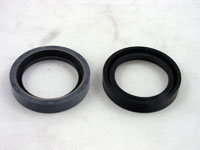
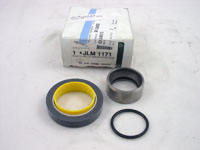 the same. One of the changes that needs to happen when updating is to eliminate the oil slinger. This keeps excessive oil off of the back side of the seal. The new style seal does not need the slinger. The JLM-1171 kit includes a new sleeve that is longer by the thickness of the slinger. It is also of the later style that includes an o-ring to seal against the crankshaft. For those wanting the seal by itself, the part number is EAC-8815. If reusing the old collar, it must be polished to remove any grooving or rust as the new seal will leak if not run on a smooth surface.
the same. One of the changes that needs to happen when updating is to eliminate the oil slinger. This keeps excessive oil off of the back side of the seal. The new style seal does not need the slinger. The JLM-1171 kit includes a new sleeve that is longer by the thickness of the slinger. It is also of the later style that includes an o-ring to seal against the crankshaft. For those wanting the seal by itself, the part number is EAC-8815. If reusing the old collar, it must be polished to remove any grooving or rust as the new seal will leak if not run on a smooth surface. Dimensionally, the seals are .500" thick, 2.765" OD on the early and 2.775" on the later style. Inside is for a 2.00" sleeve clearance. The later style is slightly larger as it is designed to squish slightly to seal around the perimeter of the seal.
As far as installation goes, the new style seal sits in the same groove as the original with no modifications required.The outside material is a soft rubber like material designed to be installed without the use of sealants. Note in the upper left picture how it is off center. Once the pan is bolted into place (next picture), the seal is somewhat centered. The next picture shows the sleeve going into place. Note the reflection as it is highly polished. The last picture on the right is with the sleeve in place. Due to the nature of the later seal, absolute centering is not required. As long as there is clearance between the sleeve and the collar, the seal will find it's center and be fine.
On the left is a photo of a early cover in front with a later one in the rear. Note the front/outside curve. The early cover is a half arc. The later is curved to where the arc that meets the oil pan is virtually not there. This allows the oil seal to be replaced with the crankshaft in place. Of course, you need to remove the sealing collar. The early covers can be modified on the car if needed with the old seal in place to keep dirt and grindings out of the engine. This is applicable whether you are dealing with the new style seal or older style.
